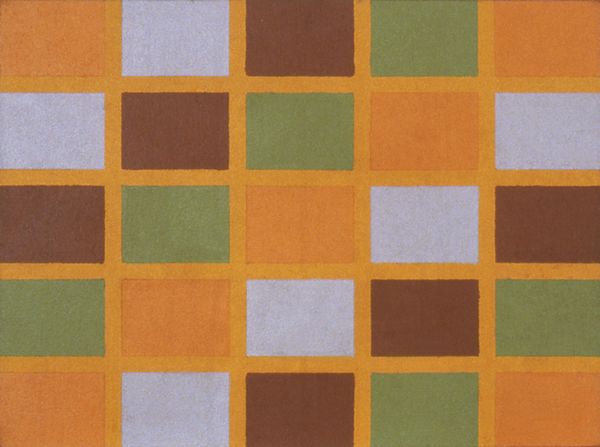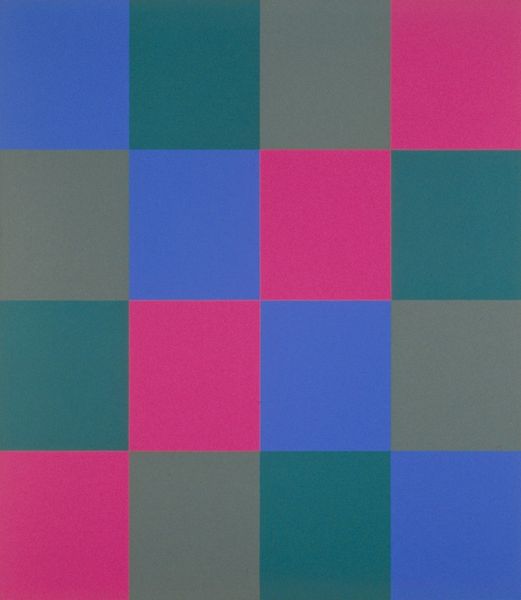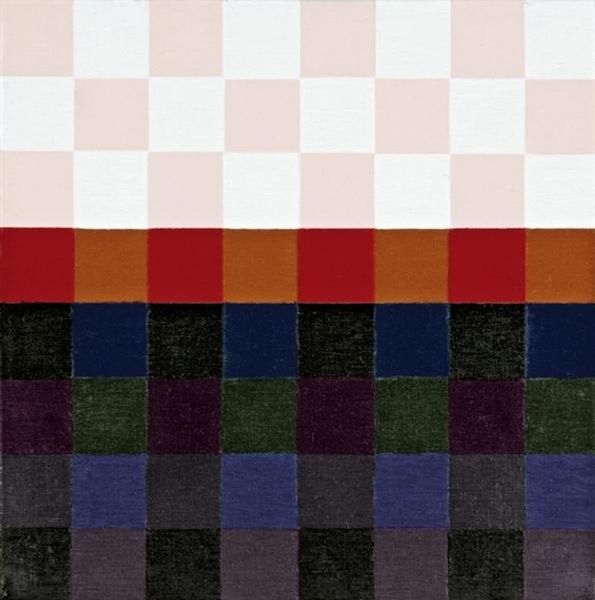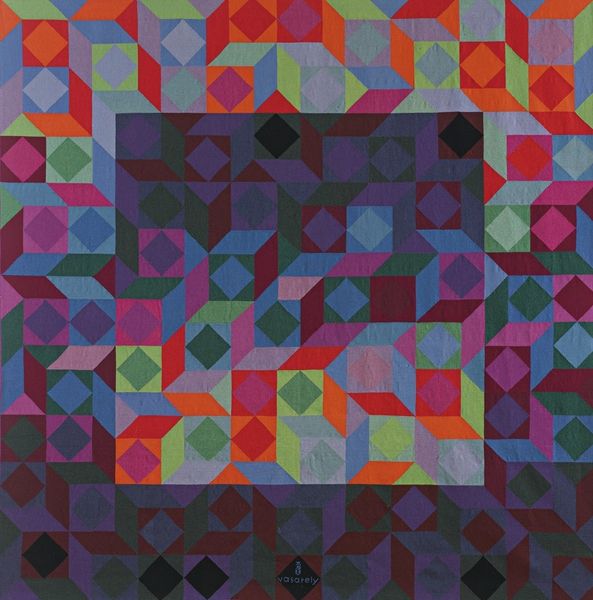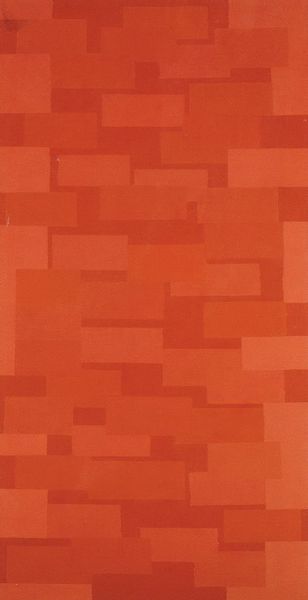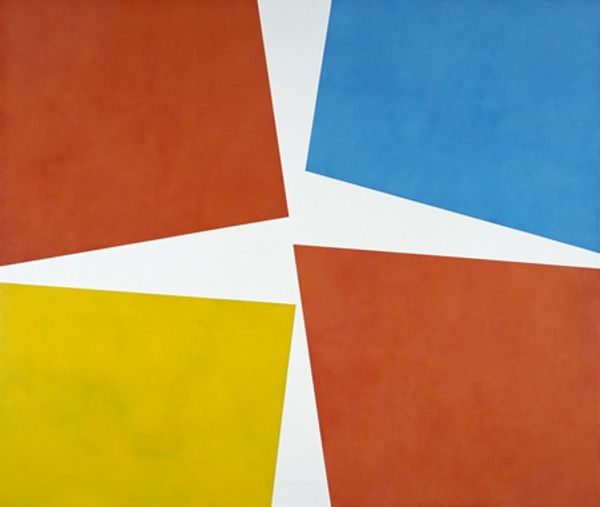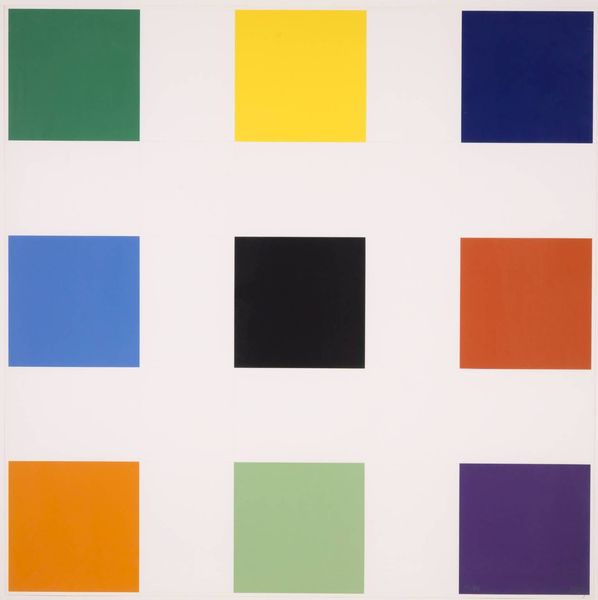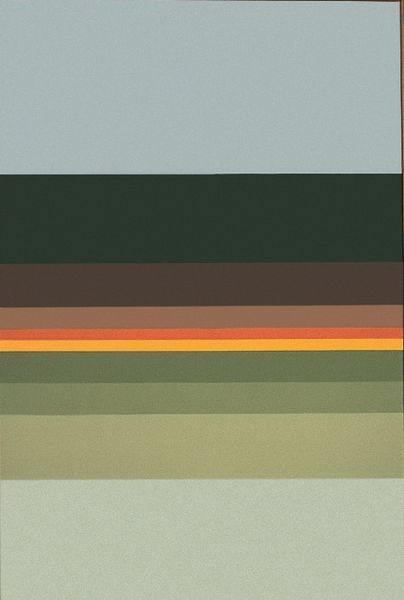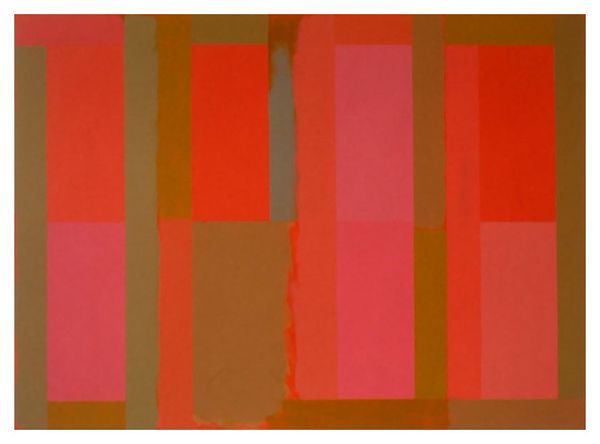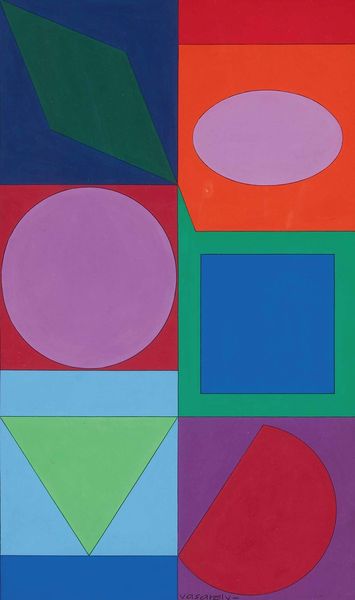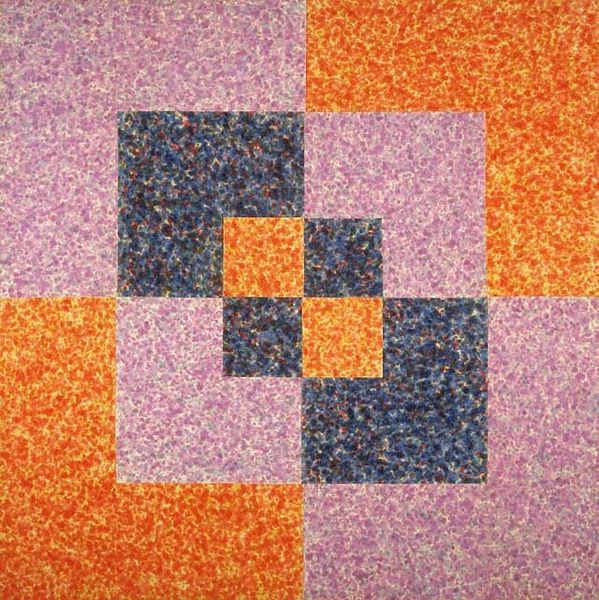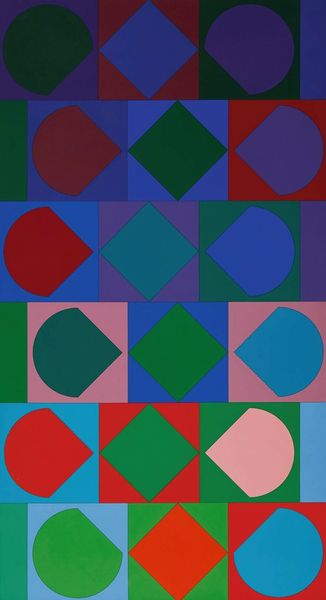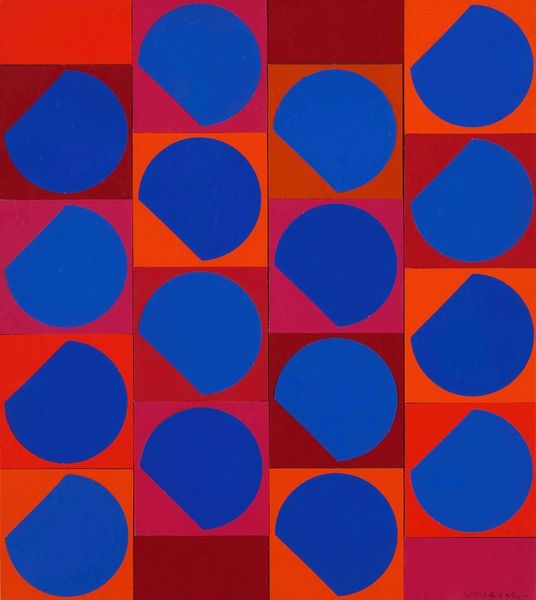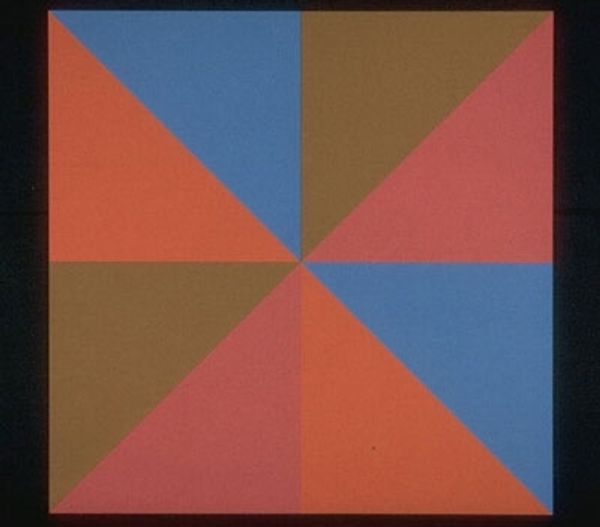
acrylic-paint
#
minimalism
#
pattern
#
colour-field-painting
#
acrylic-paint
#
geometric pattern
#
geometric
#
geometric-abstraction
#
pop-art
#
line
#
pattern repetition
#
hard-edge-painting
Copyright: Jeremy Moon,Fair Use
Editor: So this is Jeremy Moon's "No. 26" from 1969, made with acrylic paint. It features rows of squares in muted pastel colors set against an orange grid. There's something hypnotic about the repetition, yet also visually pleasing. What can you tell me about it? Curator: It's crucial to consider Moon’s approach to materials and production here. He wasn’t just making a pretty picture; he was engaging with the very idea of what constitutes art. Acrylic paint allowed for sharp lines and even surfaces, which reinforced the depersonalization inherent in hard-edge painting and pop art. Editor: Depersonalization? Curator: Absolutely. Look at the grid itself. It emphasizes industrial production and the increasing availability and deployment of these materials. These smooth, almost mechanically reproduced surfaces stand in contrast to the expressive brushstrokes championed by previous generations of artists. What does this imply about the role of the artist in society, particularly with respect to labour? Editor: So it's like, questioning the value of unique, handmade art in an era of mass production? The materials themselves are making a statement? Curator: Precisely. The colors themselves – the muted pastels juxtaposed with that bolder orange – were readily available. It’s not about some inherent beauty, but the context of availability and consumption. The use of simple geometric forms challenges any hierarchical distinction between “high art” and design meant for mass consumption. It is questioning this accepted distinction itself. Editor: That makes the painting feel very different now. It seemed decorative at first, but I understand the deeper connections Moon is making about materials, labour, and consumption. Thank you! Curator: And I see now that approaching his work with these considerations unlocks hidden potential and contextual meaning!
Comments
No comments
Be the first to comment and join the conversation on the ultimate creative platform.
